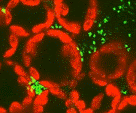Plant Pathology Department
Date of this Version
5-15-2006
Abstract
Natural, accidental, and deliberate introductions of nonindigenous crop pathogens have become increasingly recognized as threats to the U.S. economy. Given the large number of pathogens that could be introduced, development of rapid detection methods and control strategies for every potential agent would be extremely difficult and costly. Thus, to ensure the most effective direction of resources a list of high-threat pathogens is needed. We address development of a pathogen threat assessment model based on the analytic hierarchy process (AHP) that can be applied worldwide, using the United States as an illustrative example. Previously, the AHP has been shown to work well for strategic planning and risk assessment. Using the collective knowledge of subject matter expert panels incorporated into commercial decision-making software, 17 biological and economic criteria were determined and given weights for assessing the threat of accidental or deliberately introduced pathogens. The rating model can be applied by experts on particular crops to develop threat lists, especially those of high priority, based on the current knowledge of individual diseases.


Comments
Published in PHYTOPATHOLOGY, Vol. 96, No. 6, 2006. Copyright The American Phytopathological Society, 2006. Used by permission.